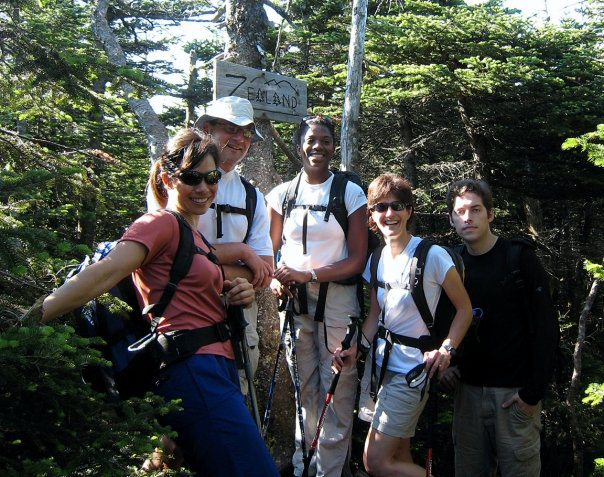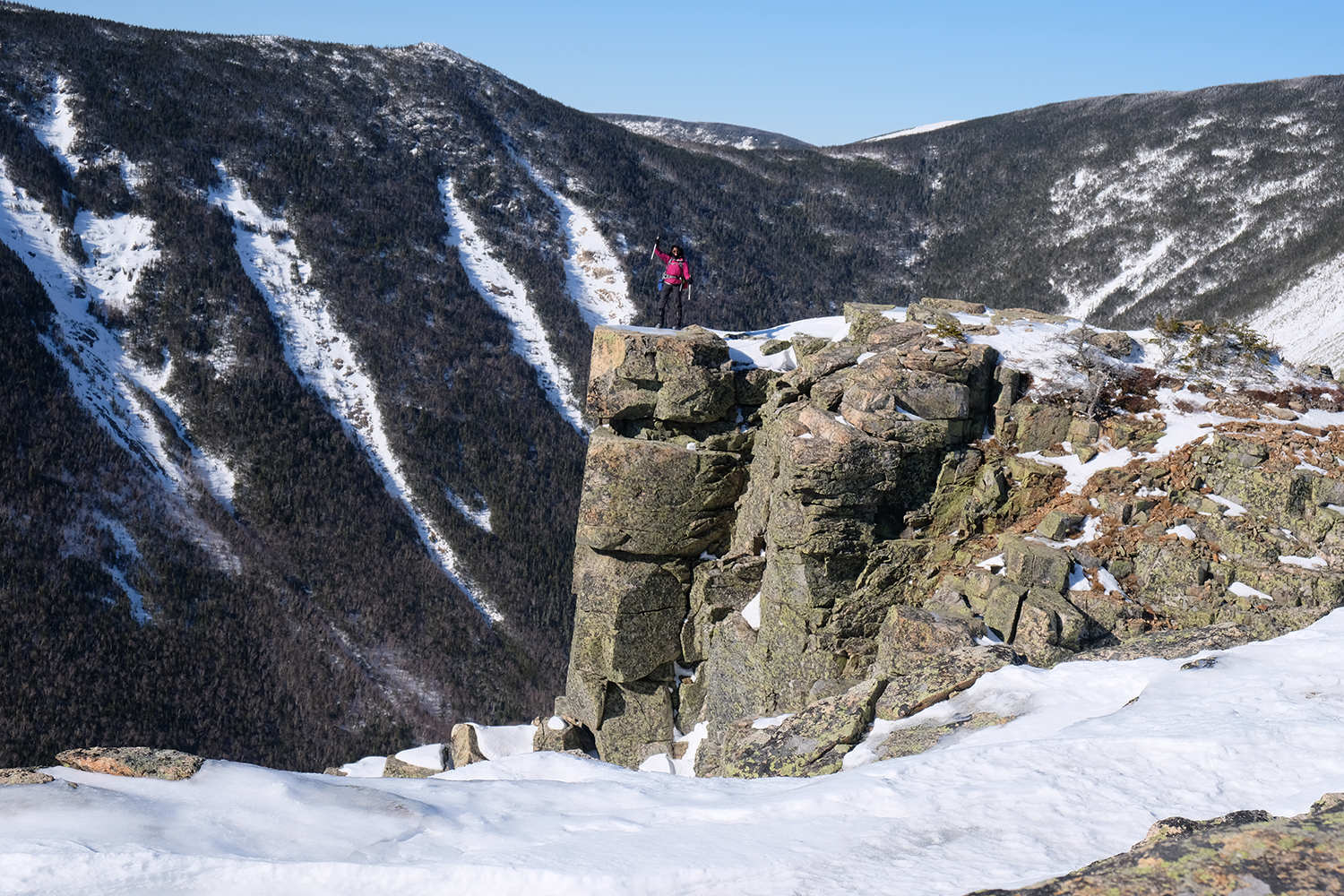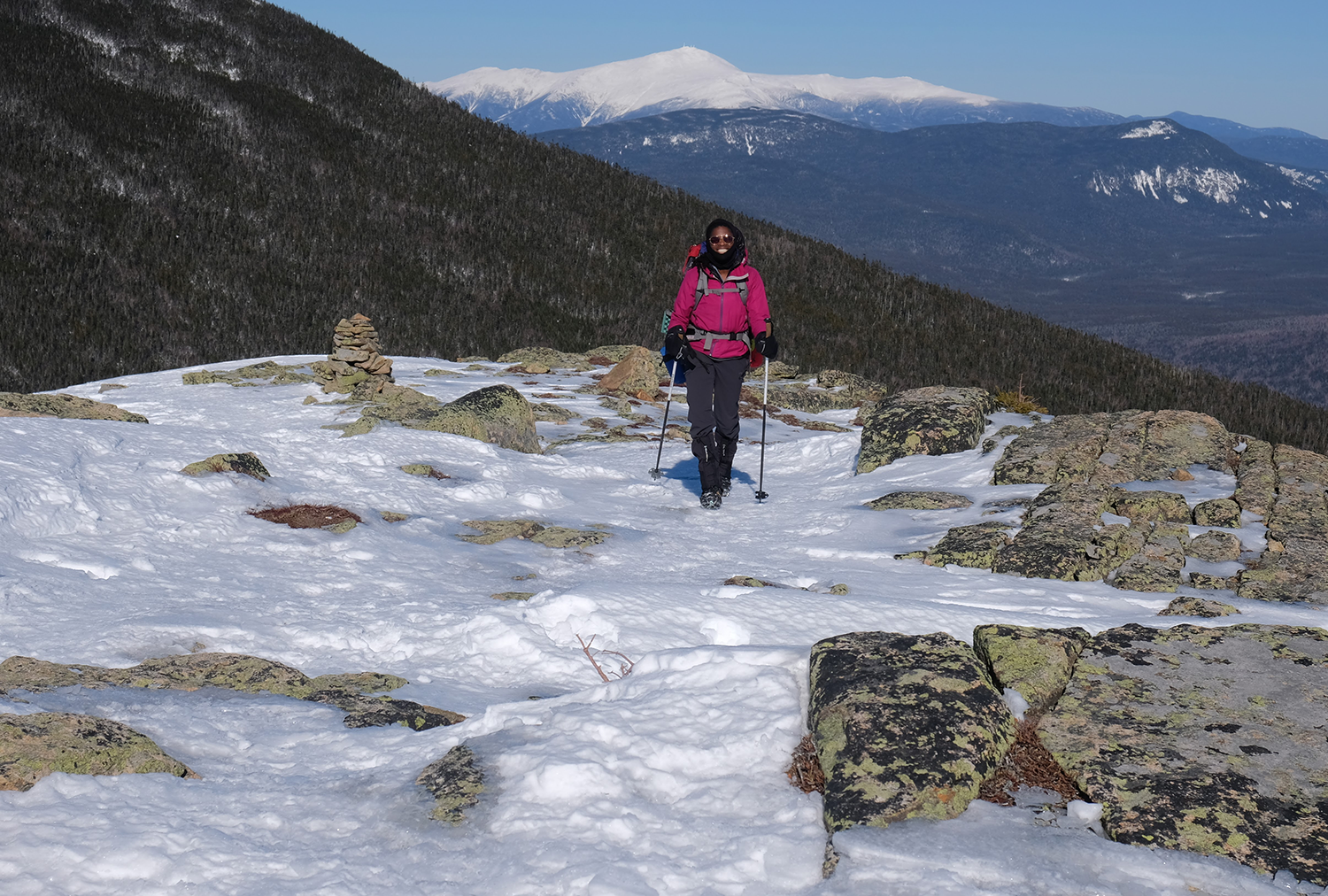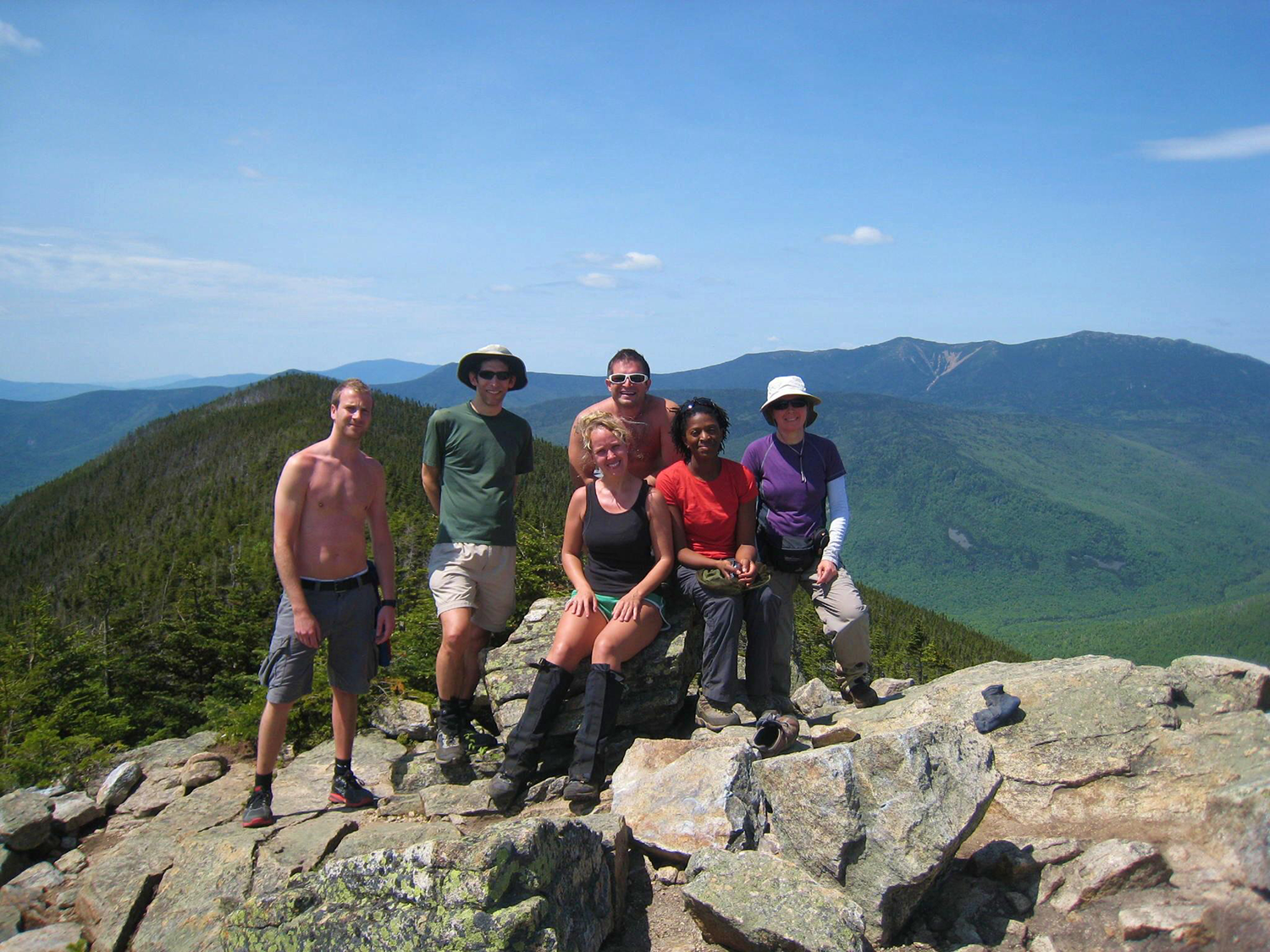My relationship with the White Mountains began in college. On a five-day backpacking trip in Vermont’s Green Mountains, a co-traveler told me of the Whites’ rugged and beautiful terrain. A few years later, when I moved to Boston as a young adult, I bought a guidebook, grabbed a friend, and headed north to the wilderness that straddles New Hampshire and Maine.
Sometime after that first trip, I was drawn to one particularly remote area, the Bonds, and soon after began methodically exploring this set of three mountains deep in the White Mountain National Forest. I started by joining more experienced friends and the local mountain club on mini-expeditions, practicing trail navigation under guiding eyes.
Years passed, and I grew comfortable in these woods. It wasn’t long until I was giving out trail advice, pointing out peaks, and sharing my own stories of the hazards and glories of past outings. Today, I am the guide I once sought out. Here, a reflection of our relationship over five trips, 13 years, and many life chapters.

Photo by Mardi Fuller.
Fall 2007
The first time I climb these steep, forested uplands, I am full of trepidation. We plan to summit six mountains, covering 21 miles in two days. The final three are the Bonds, which are known for serious terrain and conditions—tricky river crossings, abrupt elevation gain, and at times, harsh weather. It’s daunting for someone like me, of average fitness and athleticism.
We reach 4,265-foot Bondcliff, the final mountain of the traverse, at near-peak foliage, under clear, calm skies. Among many wonders, Wobanadenok, as it is known to the Abenaki, or White Mountain National Forest, holds 48 mountains 4,000 feet and higher, or “the 48” in hiker parlance.
Although they’re not tall compared to the Rockies or the Sierras, these peaks are steep and rough; their trails often gain 3,000-plus feet of elevation with few switchbacks. The trails in three stretches of the White Mountains, including the Bonds, have at least a mile of above-treeline travel. The weather is often poor in these areas due to the collision of storm tracks that meet at the highest peak in the Northeast, 6,288-foot Mount Washington.
I’m 27, a young woman piecing together my identity, throwing myself into the expanse of life. Looking out from the summit of Mount Bond, I ask these mountains to echo that expanse back to me.
My trail companion and I are close, and as we hike neither of us knows that we’ll leave our friendship here, in the Whites. We learn these woods as we learn about each other. During long stretches on the trail, the secrets we share are soon forgotten into the vastness.

Photo by Mardi Fuller.
Spring 2012
In May, a group of friends and I set off for South Twin, part of the Twin Range of the White Mountains. Typically at this time, residual snowpack remains, hardened, rotting, full of postholes. But this winter hasn’t seen much snowfall, and we amble along easily.
I’m eager to impress and I spend the day flirting with a new friend I’m not sure I’m even interested in. Instead of pursuing the scenery and the experience, I burn my thought-energy trying to be cute and clever.
And so, on Bondcliff, I miss out on transcendence. At first, I’m disappointed, but soon after, I realize it’s okay—the mountain is more patient with me than I am with myself. The exquisite summit ridge, golden in the late afternoon sun, felt no need to say, “Hey, look at me,” while I did just that for this man.
“Whether I engage deeply or remain on the surface, I leave a layer of myself on the Bonds each time, embedded in the strata of glacially tilled granite, in the dark ochre subsoil that grounds me. The forest holds them for me, these past selves.”
Whether I engage deeply or remain on the surface, I leave a layer of myself on the Bonds each time, embedded in the strata of glacially tilled granite, in the dark ochre subsoil that grounds me.
The forest holds them for me, these past selves.
Summer 2016
I promise my dear friend the best panorama of her life. She and I hiked across the White Mountains together before she scaled back as she raised a couple of kids during the intervening decade.
I’m eager to show her all I’ve discovered since. We climb 4,540-foot West Bond in hopes of catching the sunset, but the area’s fickle microclimate whips up a heavy fog where previously there was sun and fast-moving cumulus.
I’m discouraged that I can’t show off these precious mountains to my friend, that she’s now skeptical of the Bonds I’ve come to love. This is her last opportunity to hike here before she moves away.
This trip crystallizes a role I’ve grown into: an interpreter of these mountains. I’ve developed a fairly comprehensive knowledge of them, and I’ve done so as a Black person, contemplating matters of racial exclusion and confronting the associated barriers. I realize as we set up camp that I’m excited to bring this understanding to communities of color who haven’t had access to this sacred place.
The next morning, we reclimb West Bond. This time, we aren’t rushed, and time feels abundant. The sky delivers its best blue.
“This is the best hike I’ve ever done,” my friend says, and I suddenly see the Bonds through her eyes, as if it’s my first time again. In another three miles, we’ll be trudging out an interminable logging road, our bodies cranky with exhaustion, but for now, I’m present in this euphoria.

Photo by Mardi Fuller.
Winter 2019
Three friends and I attempt the Bonds in February of a big snow year, on what might be my hundredth hike in the Whites. There are no reports of anyone pushing past Zealand Mountain within the last week, which means we’ll have to break trail. In case we can’t make the traverse, we book bunks at Zealand High Mountain Hut.
“Three friends and I attempt the Bonds in February of a big snow year, on what might be my hundredth hike in the Whites.”
At mile seven, we encounter a man hiking toward us. He appears surprised to see us—four women, one Black—out in winter. We say hello and continue past, but he engages us, asking about our preparation and plans. We’re polite but brief. Unsatisfied, he continues, nearly yelling:
“Do you know where you are?”
At the spur for Zealand Mountain, we meet a wall of unbroken snow. With 10 miles of trail-breaking and navigation ahead at midafternoon, we decide to retreat, subsumed by the emotional ambivalence of an anticlimax. Upon entering the hut, we discover that our trail interrogator is also spending the evening. He and his group are throwing a Caribbean-themed night.
Nearly 20 people in Hawaiian shirts and leis greet us, seeming to have missed that neither is very Caribbean. As the daughter of two Jamaicans, I cringe both inwardly and outwardly, wishing I’d built a snow cave beyond Zealand for the night. To make the situation bearable, I convince them to let me take over selector— the Jamaican word for DJing— responsibilities. I groove to Dancehall and Soca alone in a corner, while my hut companions process sounds new to their ears.

Photo by Mardi Fuller.
Winter 2020
A year later, at 41 years old, I return with the same group of friends. We’ve heard the trails to the Bonds are broken out, and the forecast is mostly in our favor—except for 50-plus mile-per-hour winds along the most exposed section. Our plan is to push to treeline and double-back toward the hut if conditions are poor. When we poke into the alpine, we find calm winds. It seems the mountains may allow us to pass.
I’m giddy as we reach West Bond, and I practically prance up the mile-long ascent, undaunted by the 1,000-plus feet of elevation gain. The serrated ridge of Bondcliff unfolds, a familiar and cherished view that in this season is flattened by thin light into a monochrome of blue-black and white.
Crossing the ridgeline, I now know the Bonds in all four seasons, as they have known me in all seasons of my adulthood. Within a matter of miles I will be stumbling, limping out on abused legs, returning to my basest self. But on Bondcliff, I take my moment of ephemeral peace—or perhaps I allow it to take me.
Follow Mardi Fuller on Instagram at @wherelocsflyfree.
Hike two miles along a southern section of the Whites, from Old Bridle Path to West Rattlesnake, for a beginner-friendly outing with big rewards. The roundtrip features 360-degree views of the Lakes Region from a 1,200-foot summit.
About the Author
A lifelong backcountry adventurer, in January 2021, Mardi Fuller became the first known Black person to hike all 48 of New Hampshire’s high peaks in winter. Based in Boston, Fuller works as a nonprofit communications director, volunteers with the local Outdoor Afro network, and advocates for racial equity through writing, speaking, and community building.
Cover photo by Mardi Fuller.

